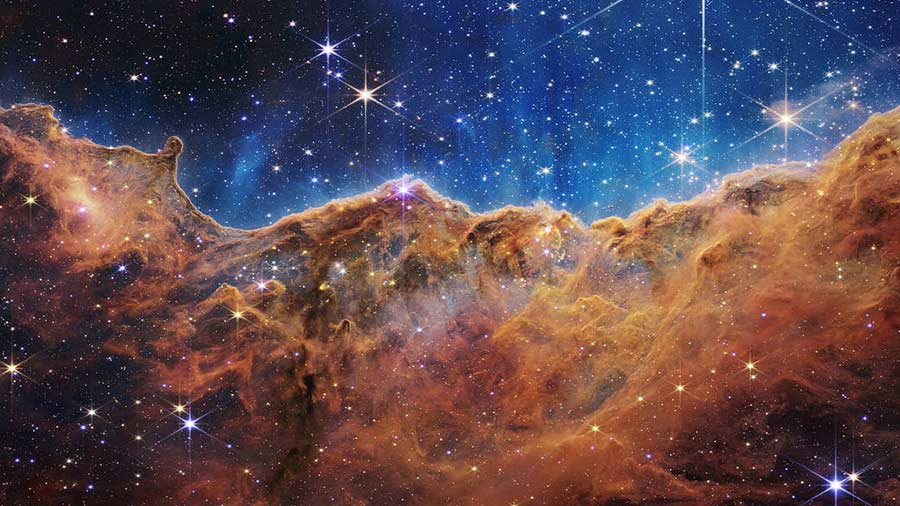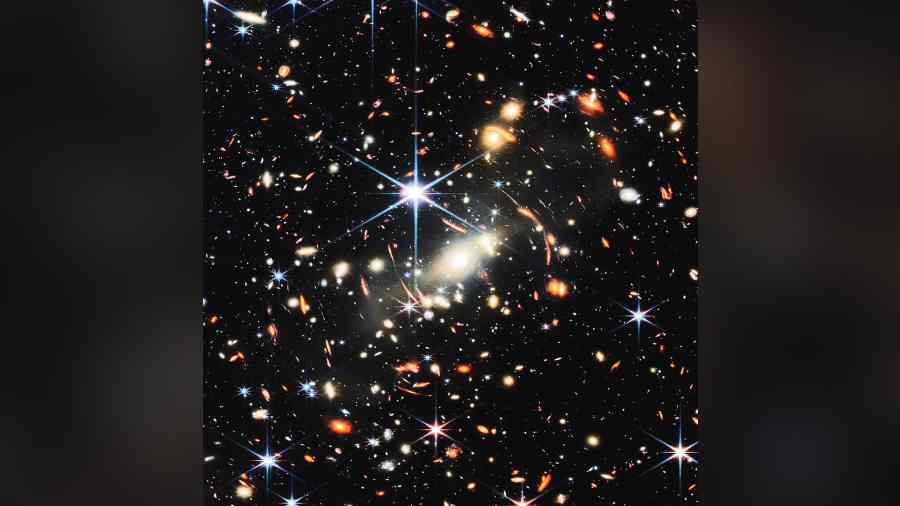If your social media feeds have been flooded with dramatic, vibrant visuals of swirling red waves and twinkling stars speckled in a black sky, then you’ve just got a glimpse into the universe.
In a televised broadcast at 8pm IST, on Tuesday, July 12, NASA released the “deepest infrared images of the universe yet” taken from the James Webb Space Telescope, which orbits the sun and is the most complex observatory ever built.
A look at the pictures and what they are about…
Cosmic Cliffs, Carina Nebula
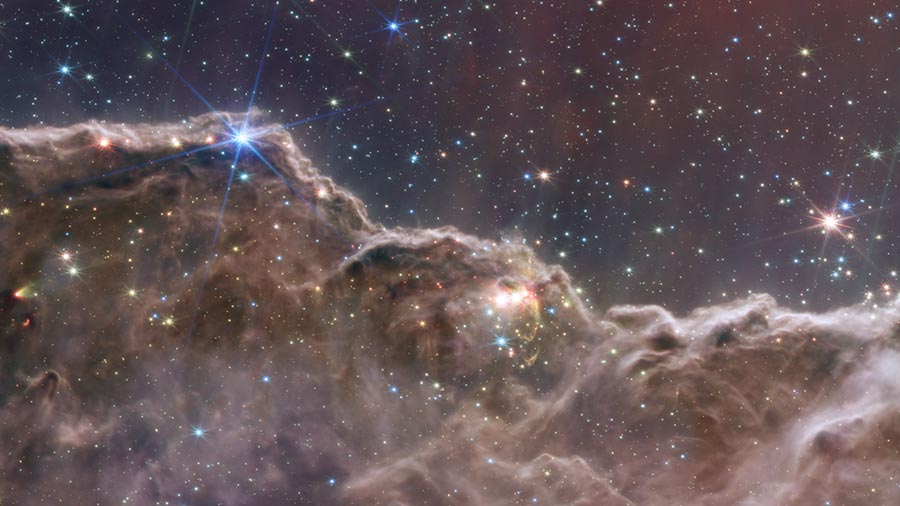
Another image of the NGC 3324 region of the Carina Nebula, a composite from two Webb cameras — Near-Infrared Camera (NIRCam) and Mid-Infrared Instrument (MIRI)
A landscape of “mountains” and “valleys” speckled with glittering stars”, this is an image of the edge of gaseous cavity in a star-forming region roughly 7,600 light years away, called NGC 3324 in the Carina Nebula.
Stephan’s Quintet

Most famously featured in It’s a Wonderful Life, Stephan’s Quintet is Webb’s largest mosaic image, about one-fifth the size of the moon. It contains over 150 million pixels and is constructed from almost 1,000 separate image files, showing a visual grouping of five galaxies.
Southern Ring Nebula
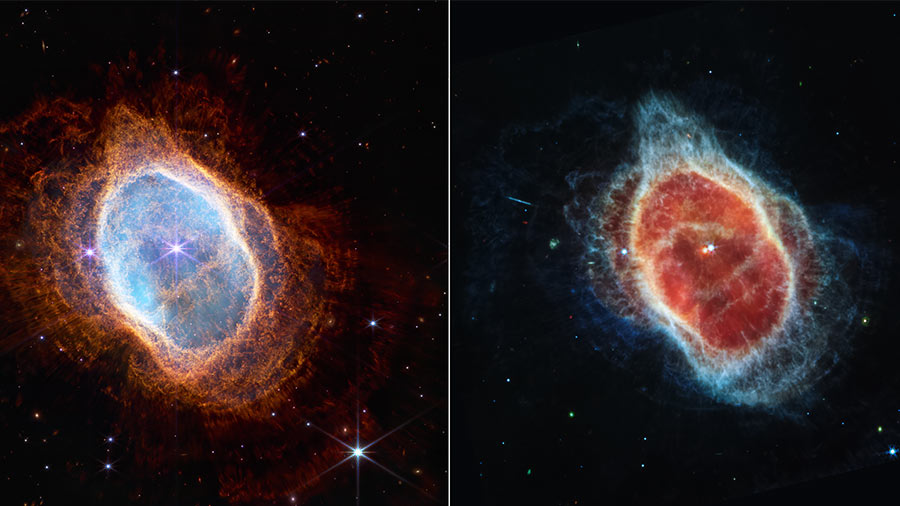
This image of the Southern Ring planetary Nebula, formally the NGC 3132, approximately 2,500 light-years away, was taken on two cameras aboard the Webb. Planetary nebulae are the shells of gas and dust ejected from dying stars, and as the NASA website says, “Some stars save the best for last.”
SMACS 0723
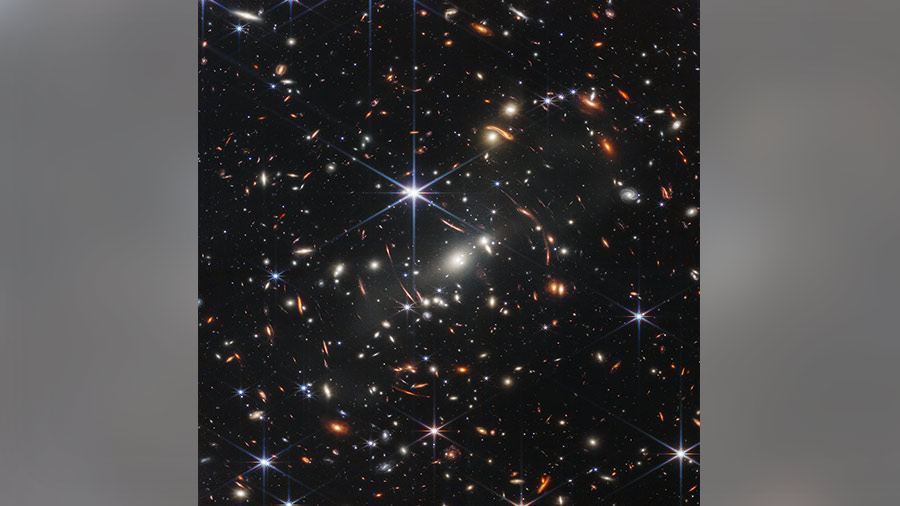
Webb’s First Deep Field or galaxy cluster SMACS 0723 has thousands of galaxies within it, including the faintest objects caught by infrared. The image is actually just a sliver of the universe, comparable to a grain of sand held at arm’s length by someone on the ground, and is a composite made from images at different wavelengths, totaling 12.5 hours.
The world celebrates
A news such as this has obviously not gone without the world celebrating the events. At their concert in Berlin, Coldplay projected the images on stage to the notes of A Sky Full of Stars
Celebrities have expressed their awe at not only the extent of technology but the sheer vastness of the universe.
Formula One champion Lewis Hamilton thanked NASA for “sharing the universe’s magic”
Former POTUS Bill Clinton tweeted saying “I’m struck by the vastness of our universe.”
A tweet of a lit-up billboard at Times Square prompted a reply from NASA with #UnfoldTheUniverse
Webb Space Telescope website, which has all the downloadable versions of the images — yes, you can thank them for your wallpapers — also has a section for posters of the images and for the events being held around the world to celebrate the release!
Where there are celebrations, there will be memes and other creative expressions to mark the milestone, and this news was no exception. From evergreen memes to Indianisms, people had a lot to say.
Some older memes made a comeback.
Some hard truths were driven home.
Of course, there was a meme with The Office.
Katy Perry fans found the perfect backdrop for their next poster.
And people even went old-school Bollywood to show NASA some love.
As always, Google was en pointe with their doodle of the day.
